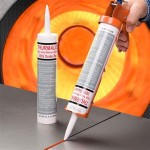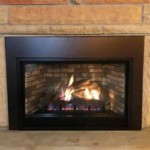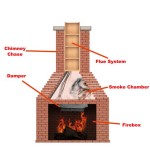Here is an article focusing on tiled fireplace hearth ideas, written to meet your specifications:
Tiled Fireplace Hearth Ideas: A Comprehensive Guide
The fireplace hearth serves as both a functional and aesthetic focal point in a living space. Constructed traditionally from non-combustible materials, the hearth provides a safe buffer between the firebox and the surrounding floor. Beyond its practical purpose, the hearth offers a significant opportunity to enhance the room’s design. Tiled hearths, in particular, present a wide array of design possibilities, allowing homeowners to customize the appearance of their fireplace to complement any interior style.
Choosing the right tile for a fireplace hearth involves considering various factors, including the tile material, size, shape, color, pattern, and overall aesthetic. This article offers a detailed exploration of tiled fireplace hearth ideas, providing insights into design considerations and practical implications.
Material Selection for Tiled Fireplace Hearths
The material of the tile is a crucial element in designing a fireplace hearth. Different tile materials offer varying levels of heat resistance, durability, and aesthetic appeal. Common choices include ceramic, porcelain, natural stone (such as granite, marble, and slate), and even concrete tiles.
Ceramic Tiles: Ceramic tiles are a popular and cost-effective option. They come in a vast range of colors, patterns, and sizes, making them highly versatile for various design styles. While ceramic tiles are durable, they may not be as heat-resistant as other materials, making them suitable for fireplaces that are not used frequently or for primarily decorative purposes. It is important to select ceramic tiles with a high PEI (Porcelain Enamel Institute) rating for durability and abrasion resistance, especially if the hearth is likely to experience foot traffic.
Porcelain Tiles: Porcelain tiles are denser and more durable than ceramic tiles. They are also highly resistant to heat, moisture, and staining, making them an excellent choice for fireplace hearths that will be exposed to high temperatures or potential spills. Porcelain tiles are available in a wide range of styles, including those that mimic the appearance of natural stone, wood, or concrete. Their durability and low maintenance requirements make them a practical and visually appealing option.
Natural Stone Tiles: Natural stone tiles, such as granite, marble, slate, and travertine, offer a luxurious and timeless aesthetic. Each type of stone has its unique veining, color variations, and texture, adding character and visual interest to the hearth. Granite is known for its exceptional durability and heat resistance, while marble offers a sophisticated and elegant look. Slate provides a more rustic and textured appearance. Natural stone tiles often require sealing to protect them from staining and moisture damage, and their cost can be higher than ceramic or porcelain tiles.
Concrete Tiles: Concrete tiles are becoming increasingly popular for their modern and industrial aesthetic. They are durable and can be customized with various colors, textures, and patterns. Concrete tiles are also heat-resistant, making them suitable for fireplace hearths. However, they may require sealing to prevent staining and moisture absorption. The weight of concrete tiles should also be considered during installation, as they may require additional structural support.
Design Considerations for Tiled Fireplace Hearths
Beyond the material, the design of a tiled fireplace hearth significantly impacts the overall aesthetic of the room. Factors such as tile size, shape, color, pattern, and layout contribute to the visual appeal and functionality of the hearth.
Tile Size and Shape: The size and shape of the tiles can influence the perceived scale and style of the hearth. Large format tiles, for example, can create a seamless and modern look, while smaller tiles can add texture and visual interest. Rectangular tiles can be arranged in various patterns, such as herringbone or brick layouts, while square tiles offer a more traditional appearance. Mosaic tiles, consisting of small pieces of tile arranged in a pattern, can add intricate detail and color to the hearth. The choice of tile size and shape should complement the size and style of the fireplace and the surrounding room.
Color and Pattern: The color and pattern of the tiles can significantly impact the overall aesthetic of the hearth. Neutral colors, such as gray, beige, and white, provide a versatile backdrop that can complement various design styles. Bold colors, such as red, blue, or green, can add a pop of color and create a focal point in the room. Patterns can be created using different colored tiles or by arranging tiles in a specific layout. Geometric patterns, such as chevrons or stripes, can add a modern and dynamic look, while traditional patterns, such as floral or arabesque designs, can create a more classic and elegant feel.
Layout and Arrangement: The layout and arrangement of the tiles can also influence the visual appeal of the hearth. A simple and symmetrical layout can create a clean and balanced look, while a more complex and asymmetrical layout can add visual interest and personality. The grout color can also impact the overall appearance of the hearth. A contrasting grout color can highlight the shape and size of the tiles, while a matching grout color can create a more seamless and uniform look. The layout and arrangement of the tiles should be carefully considered to achieve the desired aesthetic.
Installation and Maintenance of Tiled Fireplace Hearths
Proper installation and regular maintenance are essential for ensuring the longevity and appearance of a tiled fireplace hearth. The installation process typically involves preparing the subfloor, applying a layer of mortar, setting the tiles, and grouting the joints. Proper installation techniques are crucial for preventing cracks, loose tiles, and water damage.
Subfloor Preparation: Before installing the tiles, it is essential to ensure that the subfloor is clean, level, and structurally sound. Any existing flooring materials should be removed, and the subfloor should be inspected for cracks or damage. A layer of cement board or backer board may be required to provide a stable and moisture-resistant surface for the tiles. The subfloor should be properly prepared to ensure that the tiles are securely bonded and will not crack or shift over time.
Setting the Tiles: Once the subfloor is prepared, a layer of mortar is applied using a notched trowel. The tiles are then carefully placed onto the mortar, ensuring that they are level and evenly spaced. Tile spacers can be used to maintain consistent grout lines. The tiles should be firmly pressed into the mortar to ensure a strong bond. After the mortar has dried, the grout is applied to fill the joints between the tiles. The grout should be carefully worked into the joints, and any excess grout should be removed with a damp sponge.
Maintenance: Regular cleaning and maintenance are essential for preserving the appearance of a tiled fireplace hearth. The hearth should be swept or vacuumed regularly to remove dust and debris. Spills should be cleaned up promptly to prevent staining. A mild detergent and water can be used to clean the tiles, and a grout cleaner can be used to remove stubborn stains. Sealing the tiles and grout can help to protect them from moisture and staining. With proper care and maintenance, a tiled fireplace hearth can provide years of beauty and functionality.

Pin On Fireplace

Fireplace Tile Ideas Designs To Inspire You

Warm Up With Fireplace Tile Ideas Home Remodel Surround

Hot Fireplace Tile Trends Bedrosians Stone
These Tiled Fireplaces Are Swoon Worthy Tileist By Tilebar

14 Fresh Designs For Tiled Fireplaces Bob Vila

Fireplace Tile Ideas Designs To Inspire You

Our Favorite Fireplace Design Ideas The Tile Blog

How To Tile Over A Brick Hearth Shine Your Light

Fireplace Tile Design Ideas For 2024 The
Related Posts








